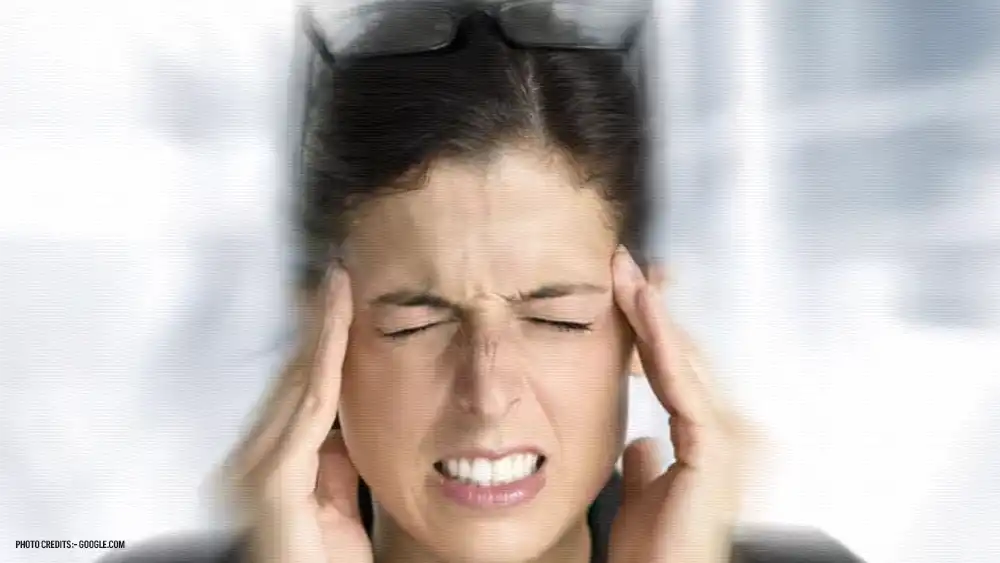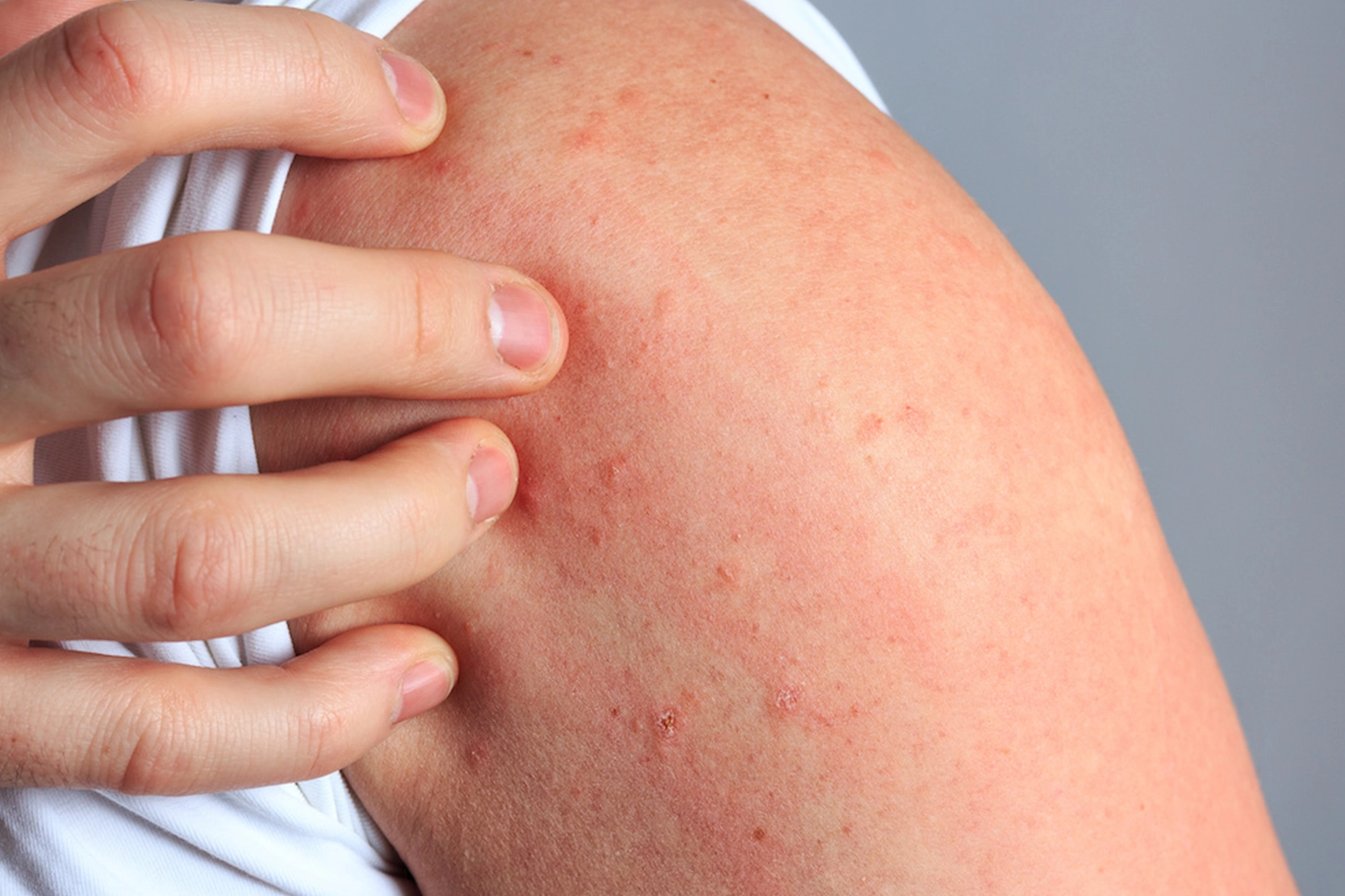
NEUROSCIENCE
What is Migraine: Understanding the Differences and Effective Management
-
Rahul Priydarss
Explore the world of migraines with our comprehensive guide. Learn about symptoms, triggers, types, and effective treatment options to manage this debilitating condition. From understanding the difference between headaches and migraines to uncovering genetic and environmental factors, discover valuable insights to enhance your migraine management journey. Whether you’re seeking relief or supporting a loved one, our in-depth article provides essential knowledge for navigating migraines with confidence. Dive in now!
Introduction of Migraine:
A migraine is a severe headache characterized by intense, throbbing pain, usually on one side of the head. It often comes with symptoms like nausea, vomiting, and extreme sensitivity to light and sound. Some people also experience visual disturbances known as auras before the headache begins. The exact cause of migraines is not fully understood, but it involves genetic and environmental factors, changes in brain chemicals, and nerve communication pathways. Common triggers include stress, certain foods and beverages, hormonal changes, sensory stimuli, changes in sleep patterns, and weather changes.
Managing migraines typically involves a combination of medications and lifestyle changes. Over-the-counter pain relievers like ibuprofen or aspirin may help with mild migraines, while more severe cases might require prescription medications. Preventative treatments, including specific medications, regular exercise, adequate sleep, and stress management techniques, can also reduce migraine frequency. Identifying and avoiding personal triggers is crucial for effective management. Consulting with a healthcare professional is essential to develop a tailored treatment plan and improve the quality of life for those affected by migraines.

Table of Contents
Definition of Migraine:
A migraine is a neurological condition characterized by intense, throbbing headaches that typically occur on one side of the head. These headaches are often accompanied by other symptoms such as nausea, vomiting, and heightened sensitivity to light and sound. Migraines can vary in duration and severity, and some individuals may experience visual or sensory disturbances known as auras before the onset of the headache.
When it comes to pain in the head, not all headaches are created equal. While both headaches and migraines can cause discomfort, they differ significantly in terms of severity, symptoms, and treatment.
Headaches: Headaches are one of the most common ailments affecting people of all ages. They can be caused by a variety of factors, including stress, dehydration, tension, and sinus problems. Here are some key characteristics of headaches:
- Pain Type: Headache pain is typically dull or aching. It can affect both sides of the head or be localized to a specific area.
- Duration: The pain can last from a few minutes to several hours. Tension headaches, for example, can persist for extended periods but usually are less intense.
- Symptoms: Headaches generally do not come with additional symptoms like nausea, vomiting, or extreme sensitivity to light and sound.
- Triggers: Common triggers include stress, poor posture, dehydration, lack of sleep, and certain foods or drinks.
- Treatment: Over-the-counter pain relievers, hydration, rest, and relaxation techniques often alleviate headache symptoms.
Migraines: Migraines, on the other hand, are a neurological condition characterized by recurring, intense episodes of headache pain. They are often accompanied by a range of other debilitating symptoms. Here’s what sets migraines apart:
- Pain Type: Migraine pain is usually throbbing or pulsating and is often felt on one side of the head. However, it can occur on both sides.
- Duration: Migraines can last from several hours to several days. The pain intensity can be so severe that it interferes with daily activities.
- Symptoms: Migraines often come with additional symptoms such as nausea, vomiting, and heightened sensitivity to light (photophobia) and sound (phonophobia). Some people also experience visual disturbances known as auras before the onset of the headache.
- Triggers: Migraine triggers are more complex and can include hormonal changes, certain foods and drinks, environmental factors, stress, and changes in sleep patterns.
- Treatment: Migraines often require more specialized treatments, including prescription medications like triptans and CGRP inhibitors. Lifestyle changes and preventive medications may also be necessary for those with frequent attacks.
Types of Migraine:
Migraines are a complex neurological condition that can manifest in various forms. Understanding the different types of migraines is essential for effective diagnosis and treatment. Below are the primary types of migraines and their distinct characteristics.
Migraine without Aura (formerly called Common Migraine): This type of migraine doesn’t involve aura, which means there are no sensory disturbances before the headache phase. It’s characterized by moderate to severe throbbing head pain, often accompanied by nausea, vomiting, and sensitivity to light and sound.
Migraine with Aura (formerly called Classic Migraine): Migraine with aura involves sensory disturbances known as aura, which typically occur before the onset of the headache phase. Aura symptoms can include visual changes like seeing flashing lights or zigzag lines, sensory changes like tingling or numbness in the face or limbs, or difficulty speaking. After the aura phase, individuals typically experience the headache phase, which is similar to a migraine without aura.
Chronic Migraine: Chronic migraines are characterized by experiencing migraines on 15 or more days per month for at least three months, with at least eight of those days being migrainous in nature. Chronic migraines can significantly impact daily functioning and often require specialized treatment.
Menstrual Migraine: Some women experience migraines that are closely tied to their menstrual cycle. These migraines typically occur in the days leading up to or during menstruation and may be more severe or difficult to manage than migraines experienced at other times of the month.
Hemiplegic Migraine: Hemiplegic migraines are rare and involve temporary paralysis or weakness on one side of the body (hemiplegia) during or after the aura phase. Other symptoms may include vision changes, difficulty speaking, and sensory disturbances. Hemiplegic migraines can be alarming due to their neurological symptoms and require careful medical evaluation.
Vestibular Migraine: Vestibular migraines are characterized by episodes of vertigo, dizziness, and balance disturbances, often without the typical headache phase. These symptoms can be debilitating and may significantly impact daily activities.
Retinal Migraine: Retinal migraines are characterized by temporary visual disturbances or vision loss in one eye, often accompanied by a headache. These episodes can be alarming and require immediate medical attention to rule out more serious conditions affecting the eye.
Aura without Headache: As mentioned earlier, some individuals experience aura symptoms without the subsequent headache phase. This type of migraine can be confusing and may lead to a delayed diagnosis since the hallmark symptom of migraine, the headache, is absent.
Symptoms of Migraine:
Migraines are more than just bad headaches. They come with many other symptoms that can mess up your day. Let’s break down the common symptoms of migraines in simple terms.
Headache: Migraine headaches are often described as intense, throbbing pain that can last for hours to days. They commonly affect one side of the head but can also be bilateral. The pain may worsen with physical activity and can be so severe that it interferes with daily activities.
Sensitivity to Light (Photophobia): During a migraine attack, the brain becomes hypersensitive to light. Exposure to bright lights, sunlight, or even harsh indoor lighting can exacerbate migraine symptoms and cause discomfort.
Sensitivity to Sound (Phonophobia): Similar to photophobia, phonophobia refers to an increased sensitivity to sound during a migraine episode. Loud noises, certain frequencies, or even normal everyday sounds can become unbearable and aggravate migraine pain.
Nausea and Vomiting: Gastrointestinal symptoms like nausea and vomiting commonly accompany migraine attacks. These symptoms can contribute to dehydration and further exacerbate the feeling of discomfort during a migraine episode.
Aura: An aura is a group of sensory disturbances that some individuals experience before or during a migraine attack. Visual aura symptoms can include seeing flashing lights, zigzag lines, blind spots, or experiencing visual hallucinations. Other sensory disturbances may involve tingling sensations in the limbs, difficulty speaking, or changes in taste or smell.
Dizziness or Vertigo: Migraines can cause feelings of dizziness, lightheadedness, or vertigo, which is a sensation of spinning or whirling. These symptoms can worsen during the headache phase and may persist even after the pain subsides.
Aura without Headache: While less common, some individuals may experience aura symptoms without the subsequent headache phase. This can be confusing and may lead to a delayed diagnosis since the hallmark symptom of migraine, the headache, is absent.
Fatigue: Migraine attacks can be physically and mentally exhausting. Even after the headache subsides, individuals may feel drained and fatigued, making it challenging to resume normal activities.
Difficulty Concentrating: Migraine attacks can impair cognitive function, making it difficult to concentrate, think clearly, or make decisions. This “brain fog” can persist during and after the headache phase.
Stiff Neck: Neck stiffness or muscle tension is a common symptom associated with migraines, especially in the early stages of an attack. This tension can contribute to the overall discomfort experienced during a migraine episode.
Causes of Migraine:
The exact causes of migraines are not fully understood, but they are believed to involve a combination of genetic, environmental, and neurological factors. Here are some common factors that can contribute to the development of migraines.
Genetics: Migraines tend to run in families, suggesting a genetic predisposition to the condition. Certain genetic variations may make individuals more susceptible to migraines or influence the severity and frequency of attacks.
Neurological Factors: Migraines involve abnormal brain activity, particularly in the areas of the brain that regulate pain perception and sensory processing. Changes in neurotransmitter levels, such as serotonin, dopamine, and noradrenaline, may also play a role in triggering migraines.
Triggers: Various factors or triggers can precipitate migraine attacks in susceptible individuals. Common triggers include certain foods and beverages (such as aged cheeses, chocolate, alcohol, and caffeine), hormonal changes (such as fluctuations during the menstrual cycle), stress, lack of sleep, sensory stimuli (like bright lights or loud noises), changes in weather, and certain medications.
Hormonal Changes: Hormonal fluctuations, particularly in estrogen levels, can influence migraine occurrence, which is why migraines are more common in women. Many women experience migraines related to their menstrual cycle, pregnancy, or menopause.
Environmental Factors: Environmental factors, such as changes in altitude, air pressure, or exposure to certain allergens or pollutants, can trigger migraines in some individuals.
Central Sensitization: Central sensitization refers to an increased sensitivity of the central nervous system to pain and other stimuli. This heightened sensitivity may contribute to the development and persistence of migraines.
Stress and Emotional Factors: Stress, anxiety, depression, and other emotional factors can exacerbate migraine symptoms and contribute to the frequency and severity of attacks. Conversely, migraine attacks themselves can cause emotional distress and impact mood.
Sleep Disturbances: Disruptions in sleep patterns, including insufficient sleep, irregular sleep schedules, or sleep disorders like insomnia or sleep apnea, can trigger migraines in some individuals.
Dietary Factors: Certain foods and food additives, such as monosodium glutamate (MSG), artificial sweeteners, and nitrates found in processed meats, have been linked to migraines in susceptible individuals.

Diagnosis of Migraine:
Diagnosing migraines typically involves a combination of medical history, symptom evaluation, and ruling out other possible causes of headache. Here’s what the diagnosis process typically entails.
Medical History: The healthcare provider will begin by taking a thorough medical history, including details about the frequency, duration, and characteristics of your headaches, as well as any associated symptoms like nausea, vomiting, sensitivity to light and sound, aura, or other neurological symptoms.
Physical Examination: A physical examination may be performed to check for signs of other underlying medical conditions that could be contributing to your symptoms. This may include a neurological examination to assess reflexes, coordination, and sensory function.
Headache Diary: Keeping a headache diary can be helpful in tracking your symptoms over time. Recording details about your headaches, including when they occur, how long they last, any triggers or associated factors, and how you respond to treatment, can provide valuable information for diagnosis and management.
Diagnostic Criteria: Migraine diagnosis is typically based on specific criteria outlined by medical organizations such as the International Headache Society (IHS) or the American Migraine Foundation (AMF). These criteria include the frequency, duration, and characteristics of headaches, as well as the presence of specific symptoms like aura.
Laboratory Tests: In some cases, laboratory tests may be ordered to rule out other medical conditions that could be causing your symptoms. These may include blood tests, imaging studies (such as MRI or CT scans), or other diagnostic tests as deemed necessary by your healthcare provider.
Neurological Evaluation: If your symptoms are suggestive of neurological involvement, further evaluation by a neurologist may be recommended. This may include specialized tests to assess brain function and rule out other neurological conditions.
Differential Diagnosis: Migraines can sometimes be mistaken for other types of headaches or medical conditions. Your healthcare provider will consider other possible causes of your symptoms, such as tension-type headaches, cluster headaches, sinus headaches, medication overuse headaches, or secondary headaches due to underlying medical conditions.
Response to Treatment: If your symptoms respond well to migraine-specific treatments, such as triptans or other migraine medications, this can further support the diagnosis of migraines.
Referral to Specialist: In cases of complex or refractory migraines or concerns about underlying neurological conditions, your healthcare provider may refer you to a headache specialist or neurologist for further evaluation and management.
Treatment of Migraine:
The treatment of migraines aims to relieve symptoms, prevent future attacks, and improve quality of life. Treatment strategies can vary depending on the frequency, severity, and specific symptoms of migraines, as well as individual preferences and medical history. Here are some common approaches to migraine treatment.
Medicinal Treatment of Migraine: Medicinal treatment for migraines typically involves two main approaches: acute treatment to relieve symptoms during an active migraine attack and preventive treatment to reduce the frequency and severity of future attacks. Here’s an overview of the medicinal options for treating migraines:
Acute Treatment:
Nonsteroidal Anti-Inflammatory Drugs (NSAIDs): Over-the-counter NSAIDs like ibuprofen (Advil, Motrin), naproxen (Aleve), or aspirin can help alleviate mild to moderate migraine pain and inflammation.
- Triptans: Triptans are a class of prescription medications that work by constricting blood vessels and blocking pain pathways in the brain. They are highly effective in treating moderate to severe migraines and can help relieve symptoms like headache, nausea, and sensitivity to light and sound. Examples include sumatriptan (Imitrex), rizatriptan (Maxalt), and eletriptan (Relpax).
- Ergotamines: Ergotamine medications, such as dihydroergotamine (DHE) or ergotamine with caffeine (Migergot), are another option for treating migraines, particularly when triptans are ineffective or not tolerated.
- Combination Medications: Some prescription medications combine a pain reliever (such as acetaminophen, aspirin, or ibuprofen) with caffeine and/or a mild sedative to enhance their effectiveness in treating migraines. Examples include Fioricet (acetaminophen, caffeine, and butalbital) and Midrin (acetaminophen, dichloralphenazone, and isometheptene).
- Anti-nausea Medications: Medications such as ondansetron (Zofran) or prochlorperazine (Compazine) may be prescribed to relieve nausea and vomiting associated with migraines.
Preventive Treatment:
- Beta-blockers: Medications like propranolol, metoprolol, or timolol are commonly used to prevent migraines by reducing the frequency and severity of attacks.
- Anticonvulsants: Certain anticonvulsant medications, such as topiramate (Topamax) or valproate (Depakote), may be effective in preventing migraines.
- Antidepressants: Tricyclic antidepressants (e.g., amitriptyline) or selective serotonin reuptake inhibitors (SSRIs) may be used as preventive treatments for migraines, particularly in individuals who also experience depression or anxiety.
- Calcium Channel Blockers: Medications like verapamil may be prescribed for migraine prevention, particularly in individuals with certain cardiovascular risk factors.
- Botox Injections: OnabotulinumtoxinA (Botox) injections may be recommended for individuals with chronic migraines (15 or more headache days per month) to help reduce the frequency and severity of attacks.
- 4 Lifestyle Modifications: Certain lifestyle changes and self-care strategies can also help manage migraines and reduce their frequency and severity. These may include:
- Identifying Triggers: Keeping a headache diary can help identify triggers such as certain foods, beverages, stress, lack of sleep, or hormonal changes, and avoiding or minimizing exposure to these triggers.
- Regular Exercise: Engaging in regular physical activity, such as aerobic exercise or yoga, can help reduce the frequency and severity of migraines for some individuals.
- Stress Management: Stress reduction techniques such as relaxation exercises, meditation, deep breathing, or biofeedback may help prevent migraines triggered by stress.
- Healthy Sleep Habits: Maintaining a regular sleep schedule, getting an adequate amount of sleep each night, and practicing good sleep hygiene can help prevent migraines triggered by sleep disturbances.
- 5 Alternative Therapies: Some individuals may find relief from migraines through alternative therapies such as acupuncture, chiropractic manipulation, massage therapy, or herbal supplements like riboflavin (vitamin B2), magnesium, or feverfew. However, the evidence supporting the effectiveness of these treatments varies, and it’s essential to consult with a healthcare professional before trying any alternative therapies.
Increase in Migraines in Females:
Migraines are more prevalent in females compared to males, with women being approximately three times more likely to experience migraines than men. Several factors contribute to the increased incidence of migraines in females.
Overall Migraine Increase: Studies have shown an upward trend in migraines, particularly among women of childbearing age [Trends in migraine incidence among women of childbearing age from 1990 to 2019 and the prediction for 2030: an analysis of national data in China]. This could be due to various factors, but it’s not specific to 2024.
Focus on Specific Age Groups: Some studies suggest a faster increase in migraines for younger women (15-29 years old) compared to older age groups [Trends in migraine incidence among women of childbearing age from 1990 to 2019 and the prediction for 2030: an analysis of national data in China].
Hormonal Changes: Fluctuations in estrogen levels, particularly during the menstrual cycle, pregnancy, and menopause, are strongly associated with migraines in females. Many women experience menstrual migraines, which occur in the days leading up to or during menstruation when estrogen levels drop.
Oral Contraceptives: Some women may experience an increase in migraines or migraine severity while taking hormonal contraceptives, such as birth control pills or hormonal patches. Changes in hormone levels caused by these contraceptives can trigger migraines in susceptible individuals.
Pregnancy: Hormonal fluctuations during pregnancy can either improve or worsen migraines in women. Some women experience relief from migraines during pregnancy, while others may experience an increase in migraine frequency or severity, particularly during the first trimester.
Menopause: The hormonal changes that occur during menopause, specifically the decrease in estrogen levels, can trigger migraines in some women. Menopausal migraines may occur during perimenopause (the transition period leading up to menopause) or after menopause.
Stress and Lifestyle Factors: Women are often juggling multiple roles and responsibilities, which can lead to increased stress levels and lifestyle factors that contribute to migraines, such as irregular sleep patterns, poor diet, and lack of exercise.
Genetics: Migraines tend to run in families, suggesting a genetic predisposition to the condition. Since females have a higher prevalence of migraines, they may be more likely to inherit genetic factors that increase their susceptibility to migraines.
Socioeconomic and Psychosocial Factors: Socioeconomic factors, such as access to healthcare, education, and socioeconomic status, can influence the prevalence and management of migraines in females. Additionally, psychosocial factors like stress, anxiety, and depression are more common in women and can exacerbate migraines.
Migraine Triggers: Certain migraine triggers, such as hormonal fluctuations, certain foods and beverages, stress, changes in sleep patterns, and environmental factors, may affect women differently than men, leading to an increased incidence of migraines in females.
FAQs about Migraine:
A1: A headache is generally a mild to moderate pain in the head, whereas a migraine is a more severe, often throbbing pain accompanied by other symptoms like nausea, sensitivity to light and sound, and sometimes visual disturbances.
A2: Currently, there is no permanent cure for migraines. However, they can be managed effectively with medication, lifestyle changes, and avoidance of triggers.
A3: Yes, migraines often run in families, suggesting a genetic component. If your parents suffer from migraines, you are more likely to experience them as well.
A4: Common food triggers include aged cheeses, processed meats, alcohol, caffeine, and foods with high levels of additives like MSG. Keeping a food diary can help identify personal triggers.
A5: Provide a quiet, dark space for them to rest, offer water and a cool compress, and encourage them to take their prescribed medication. Avoid strong smells and bright lights.
-Please remember, to always consult with healthcare professionals or Doctors for personalized advice related to medical conditions.
Conclusion:
Antisocial Personality Disorder (ASPD) is a complex mental health condition characterized by a pervasive pattern of disregard for the rights of others. Early detection and diagnosis are crucial for ensuring appropriate treatment and support. While tests and assessments can aid in the diagnosis of ASPD, it’s essential to recognize their limitations and seek professional help for an accurate evaluation and treatment plan.




